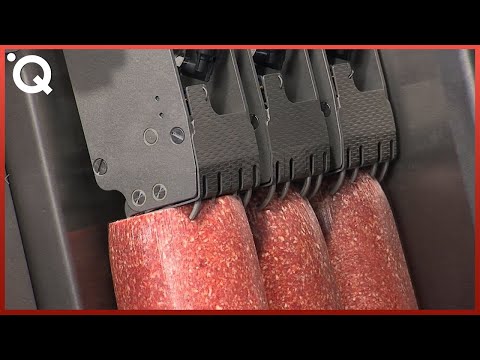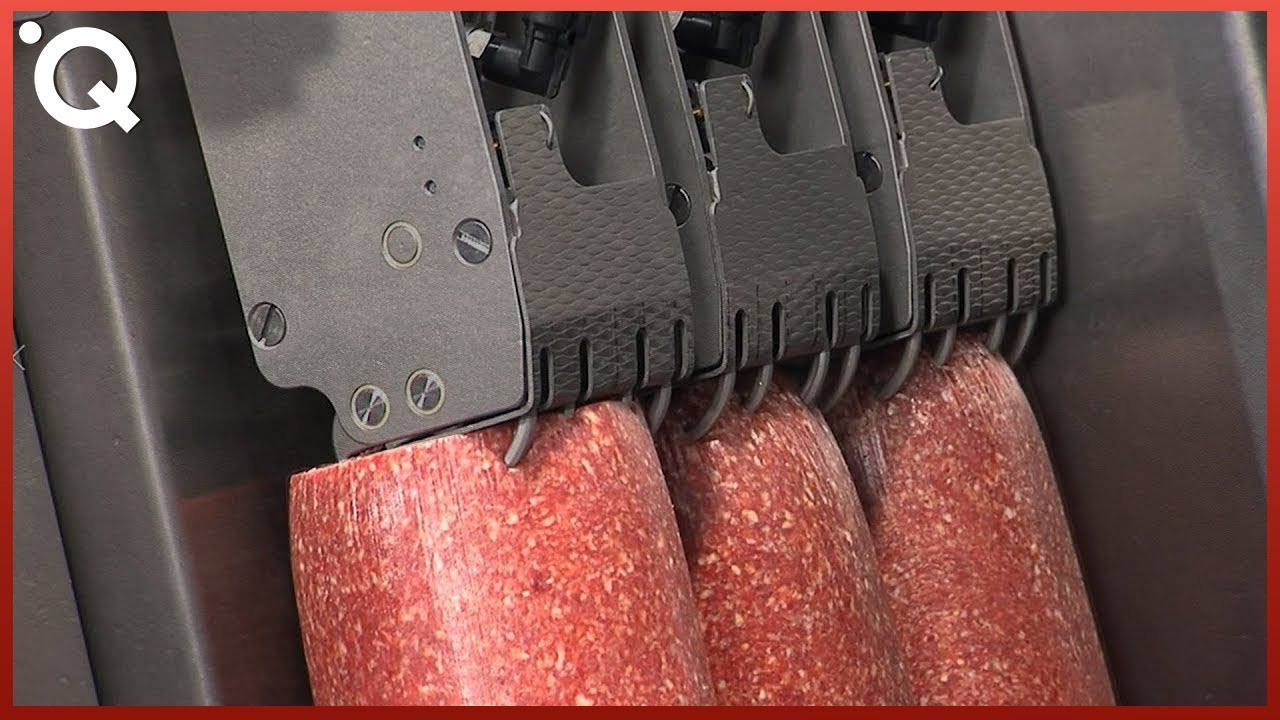Discover the extraordinary food fabric that will revolutionize your culinary experience. This innovative creation combines the finest ingredients and cutting-edge technology to weave an unparalleled gastronomic delight. Imagine indulging in exquisite dishes meticulously crafted from the finest threads of flavor, texture, and creativity. Each delectable bite tells a story, as the food fabric seamlessly blends artistry and taste to create an unforgettable dining sensation.
Prepare to be captivated by the unprecedented possibilities that the food fabric offers. Delve into a world where traditional food boundaries are shattered, and where every dish is a work of culinary genius. From delicate pastries woven with delicate threads of sweetness, to savory dishes interlaced with layers of complex flavors, this fabric is a masterpiece in its own right.
With this revolutionary concept, your dining experience will transcend the ordinary and transport you to a realm of epicurean bliss. Immerse yourself in a culinary journey where innovation and flavor intertwine, and where each bite is a revelation. The food fabric invites you to savor the future of gastronomy, where tradition meets technology and taste knows no bounds. Prepare to embark on a sensory adventure like no other, and let the food fabric weave its magic on your palate.

The Fascinating World of Food Fabric
When we think of fabric, we usually envision clothing, upholstery, or curtains. However, there is a whole other realm of fabric that often goes unnoticed but plays a crucial role in our daily lives – food fabric. This unique material not only enhances the presentation and preservation of our food but also contributes to the overall dining experience. Let’s delve into the fascinating world of food fabric and discover its many uses and benefits.
The Versatility of Food Fabric
Food fabric is a specially designed material that is used in various aspects of the culinary world. It is made from food-grade materials, ensuring safety and cleanliness. The versatility of food fabric is astounding, as it can be utilized in multiple ways:
1. Food Wrapping
Food fabric is commonly used for wrapping perishable food items. Whether it’s a sandwich, cheese, or deli meat, food fabric provides an excellent alternative to plastic wrap or aluminum foil. Its breathable nature allows the food to remain fresh, while also preventing moisture buildup that can lead to spoilage. Additionally, food fabric is reusable and environmentally friendly, making it a sustainable choice.
2. Culinary Infusion
Food fabric is often used in the process of culinary infusion. Chefs and home cooks alike utilize this fabric to create flavorful infusions by placing herbs, spices, or other aromatic ingredients in the fabric and tying it together, forming a pouch. This pouch is then immersed in liquids such as broth, stock, or sauces, allowing the flavors to infuse without leaving any residue behind. The food fabric acts as a filter, ensuring a clean and smooth infusion.
3. Cheese Aging
Food fabric also plays a crucial role in the art of cheese aging. When cheese is aged, it requires proper ventilation to develop its complex flavors and textures. Cheese makers often wrap their aging cheese wheels in food fabric, allowing the cheese to breathe and release moisture while preventing the growth of mold or bacteria. This breathable fabric helps create the ideal environment for cheese maturation, resulting in exceptional taste and quality.
4. Culinary Presentation
Food fabric adds an exquisite touch to culinary presentations. It is frequently used by chefs to elevate the visual appeal of their dishes. From lining serving baskets or trays to wrapping food items for a visually appealing display, food fabric enhances the overall aesthetics of the dining experience. The wide range of colors and patterns available in food fabric allows chefs to unleash their creativity and create visually stunning presentations.
5. Food Preservation
Food fabric is an excellent tool for preserving fruits and vegetables. When storing produce, it is essential to maintain proper airflow to prevent rotting. Food fabric bags or pouches serve this purpose perfectly. These bags allow air circulation while protecting the produce from direct contact with surfaces that may cause bruising or damage. By using food fabric for preservation, we can extend the shelf life of our fresh produce and reduce food waste.
The Advantages of Food Fabric
Food fabric offers several advantages over traditional packaging and preservation methods:
1. Eco-friendly: Unlike plastic wrap or aluminum foil, food fabric is reusable and environmentally friendly. By opting for food fabric, we can reduce our carbon footprint and contribute to a greener planet.
2. Breathability: The breathability of food fabric allows for proper airflow, preventing the buildup of moisture that can lead to spoilage. This ensures that our food stays fresh for longer periods.
3. Versatility: As discussed earlier, food fabric has a wide range of uses in the culinary world. Its versatility makes it an essential tool for chefs, home cooks, and food enthusiasts.
4. Aesthetics: Food fabric adds a touch of elegance and sophistication to culinary presentations. Its vibrant colors and patterns enhance the visual appeal of dishes, making them even more enticing.
5. Food Safety: Food fabric is made from food-grade materials that are safe for direct contact with food. It provides a hygienic barrier between the food and external factors, ensuring the safety and quality of our meals.
In Conclusion
Food fabric is a remarkable material that plays a significant role in the culinary world. Its versatility, eco-friendliness, and ability to enhance the dining experience make it a valuable asset in any kitchen. Whether it’s wrapping sandwiches, infusing flavors, aging cheese, or presenting dishes with flair, food fabric has proven to be an invaluable tool for chefs, home cooks, and food enthusiasts alike. So next time you see a beautifully presented dish or enjoy a fresh sandwich, remember the unsung hero behind it – food fabric.
“Mind-Blowing Machines: Taking the Food Industry to New Heights! #19”
Video Source : Quantum Tech HD
Food Fabric List
- Edible paper
- Chocolate fabric
- Rice paper
- Fruit leather
- Seaweed sheets
- Marshmallow fabric
- Wafer fabric
- Pasta fabric
- Ice cream cone fabric
- Cookie fabric
Food Fabric
Food fabric refers to the delightful array of ingredients and flavors that come together to create a culinary masterpiece. Just like a skilled tailor weaves various textiles to form a beautiful tapestry, a talented chef artfully combines different food components to craft a harmonious and delectable dish.
| Ingredient | Origin | Flavor Profile | Usage |
|---|---|---|---|
| Olive Oil | Mediterranean | Fruity, Peppery | A versatile oil used for sautéing, dressing, and drizzling over dishes. |
| Garlic | Asia | Pungent, Earthy | A staple in countless recipes, adding depth and aroma to savory dishes. |
| Basil | Mediterranean | Herbaceous, Sweet | Commonly used in Italian cuisine, lending a fresh and fragrant touch to sauces and salads. |
| Ginger | Asia | Pungent, Spicy | A key spice in Asian cooking, providing warmth and zing to stir-fries, curries, and teas. |
| Lemon | Mediterranean | Tangy, Citrusy | A versatile citrus fruit that adds a refreshing acidity to both sweet and savory dishes. |
These are just a few examples of the vast food fabric that exists in our culinary world. Each ingredient brings its own unique characteristics, originating from different regions of the globe. It is through the skillful combination of these flavors that chefs are able to create extraordinary gastronomic experiences.
Next time you savor a delicious meal, take a moment to appreciate the intricate tapestry of flavors that make up the food fabric, and the expertise required to weave them together into a remarkable dish.

